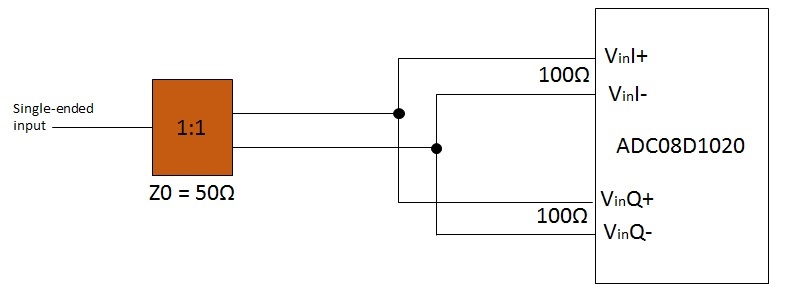Hello,
regard ADC08D1020, we are thinking of driving the ADC analog input by using a unique 1:1 50 Ohm balun and split its differential output in two differential lines, one for the ADC input named VinI+/VinI- and other for VinQ+/VinQ-. In other word, the idea is to connect two ADC differential input (VinI+/VinI- and VinQ+/VinQ-) together and driving it with a differential 50 Ohm line, as shown below.
We need to understand if this driving approach is good or there are some warnings which we have to pay attention to.
Many thanks.
Regards,
Antonio L.


